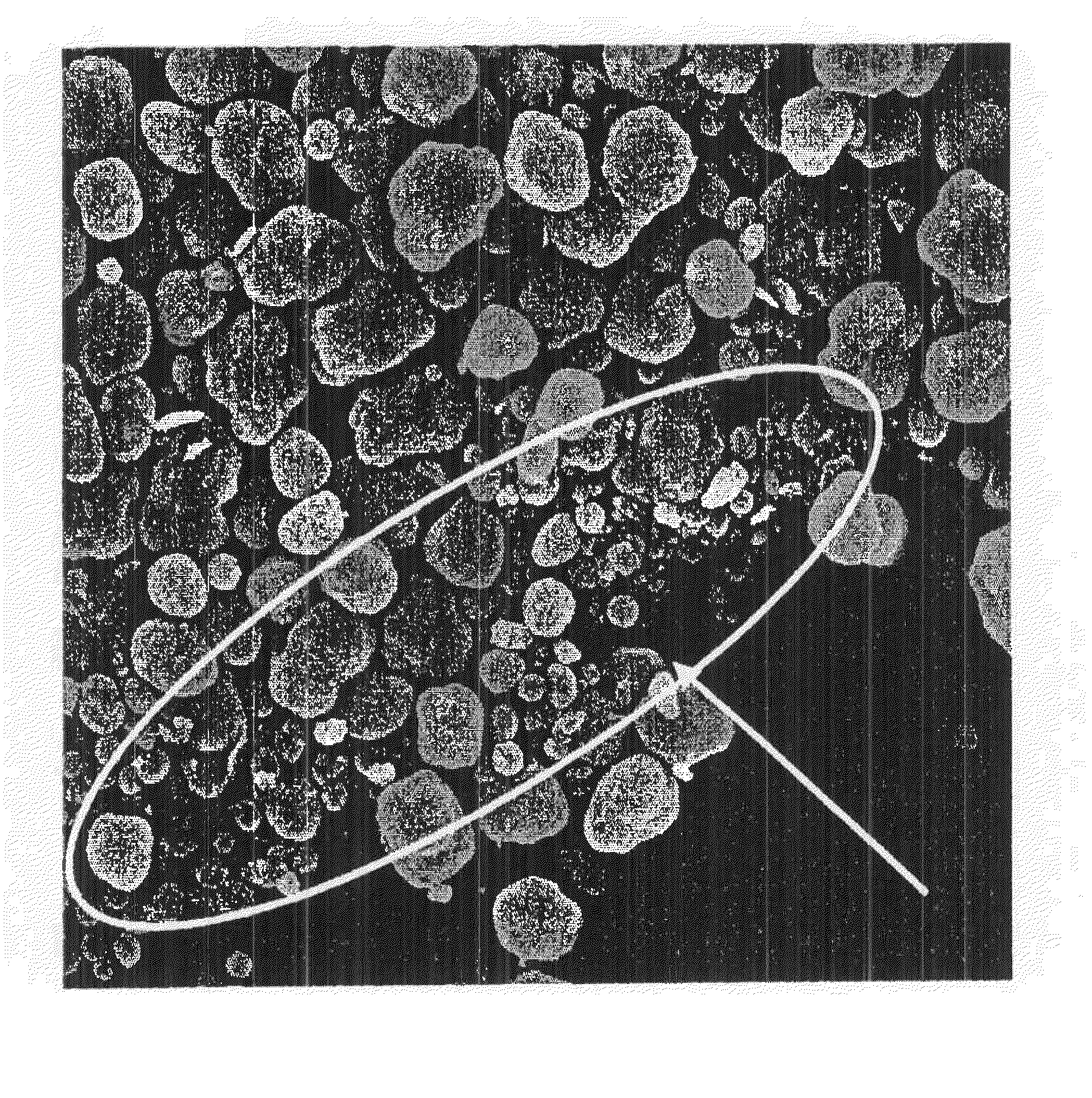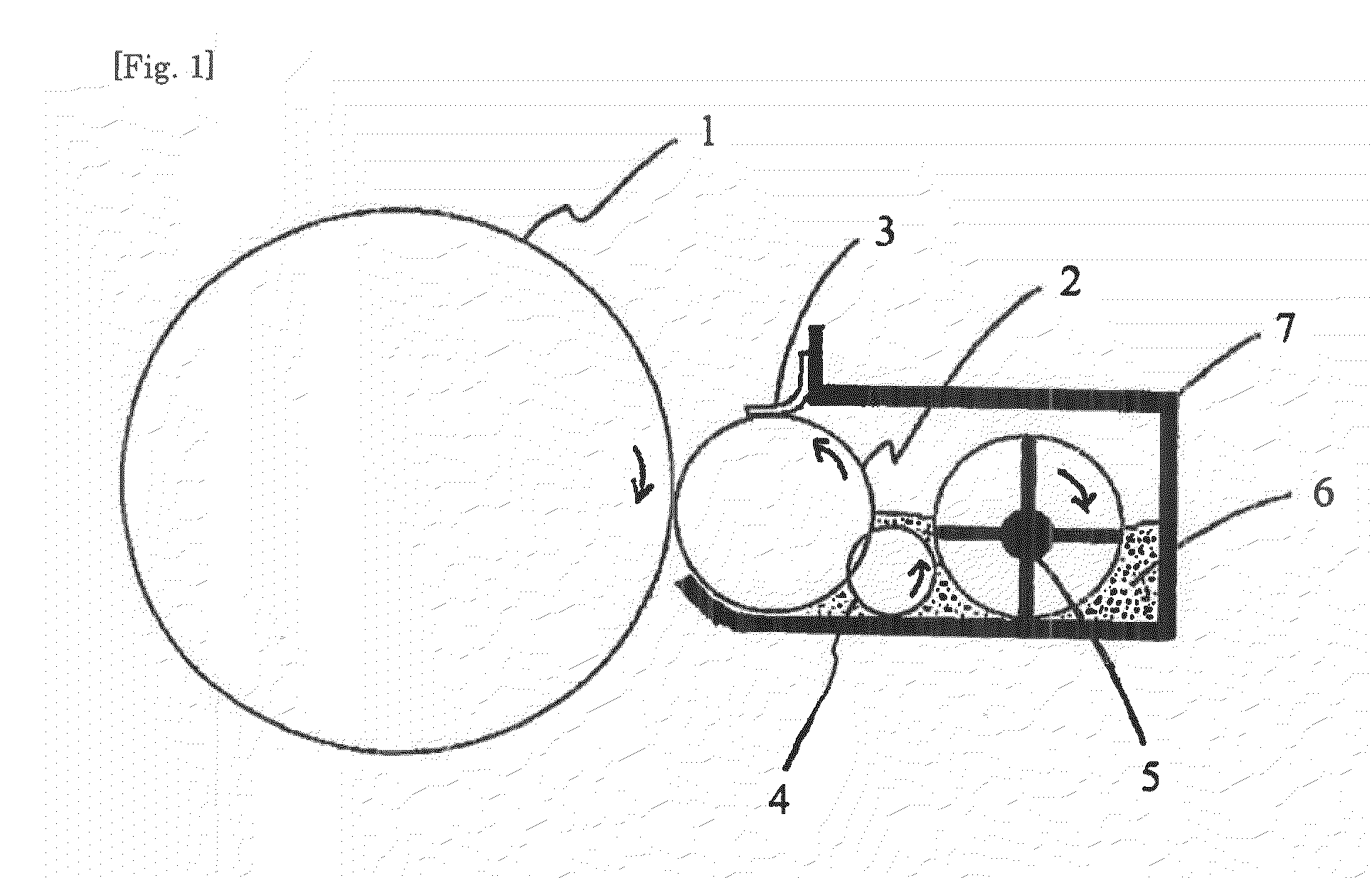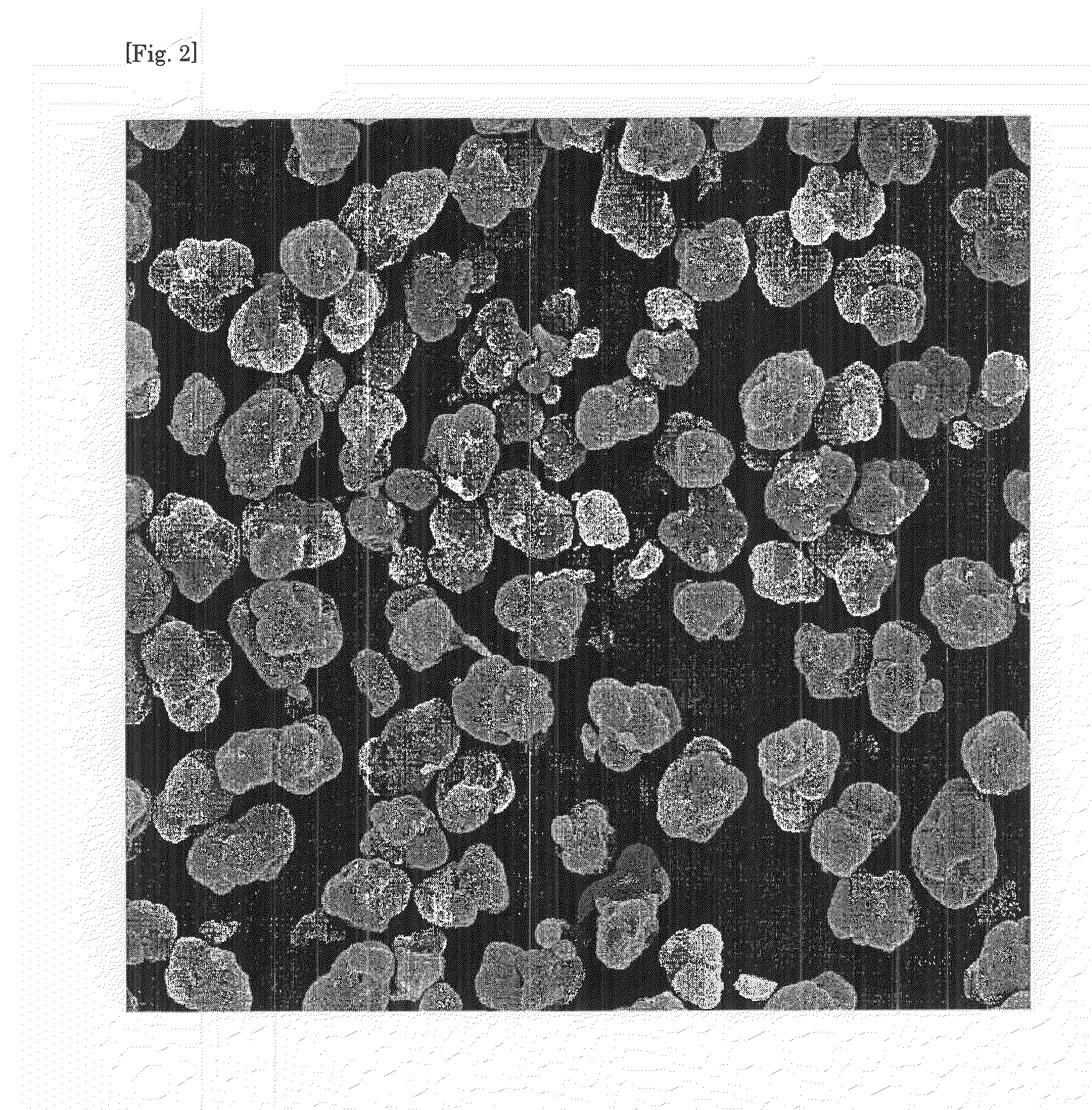Toners for electrostatic-image development, cartridge employing toner for electrostatic-image development, and image-forming apparatus
a technology of electrostatic image and cartridge, which is applied in the direction of electrographic process equipment, instruments, developers, etc., can solve the problems of poor thin-line reproducibility, insufficient dot density ratio of toner image, and insufficient clearness of line images of conventional toner, etc., to achieve satisfactory cleaning, improve surface potential, and excessive gloss
- Summary
- Abstract
- Description
- Claims
- Application Information
AI Technical Summary
Benefits of technology
Problems solved by technology
Method used
Image
Examples
example 1-1
Preparation of Wax / Long-Chain Polymerizable Monomer Dispersion A1
[0668]Twenty-seven parts (540 g) of a paraffin wax (HNP-9, manufactured by Nippon Seiro Co., Ltd.: surface tension, 23.5 mN / m: thermal properties; melting point peak temperature, 82° C.; heat of melting, 220 J / g; melting peak half-value width, 8.2° C.; crystallization temperature, 66° C.; crystallization peak half-value width, 13.0° C.), 2.8 parts of stearyl acrylate (manufactured by Tokyo Kasei Co., Ltd.), 1.9 parts of a 20% by mass aqueous solution of sodium dodecylbenzenesulfonate (Neogen S20A, manufactured by Dai-ichi Kogyo Seiyaku Co., Ltd.) (hereinafter abbreviated to “20% aqueous DBS solution”), and 68.3 parts of desalted water were heated to 90° C. and stirred for 10 minutes with a homomixer (Mark II f Model, manufactured by Tokushu Kika Kogyo Co., Ltd.).
[0669]Subsequently, the resultant dispersion was heated to 90° C. and subjected to circulating emulsification with a homogenizer (Type 15-M-8PA, manufactured b...
example 1-2
Production of Toner Base Particles B
[0709]Toner base particles B were obtained by conducting the same procedure as in “Production of Toner Base Particles A” of Example 1-1, except that “Core Material Aggregation Step”, “Shell Covering Step”, and “Rounding Step”, among the aggregation step (core material aggregation step and shell covering step), rounding step, cleaning step, and drying step in “Production of Toner Base Particles A”, were changed as shown below.
[0710]Core Material Aggregation Step
[0711]The primary-polymer-particle dispersion A1 and 20% aqueous DBS solution were introduced into a mixing vessel (capacity, 12 L; inner diameter, 208 mm; height, 355 mm) equipped with a stirrer (double-helical blade), a heating / cooling device, a condenser, and feeders for raw materials / aids. The contents were evenly mixed for 5 minutes at an internal temperature of 7° C. Subsequently, while the internal temperature was kept at 7° C. and the contents were being stirred at 250 rpm, a 5% by m...
example 1-3
Production of Toner Base Particles C
[0719]Toner base particles C were obtained by conducting the same procedure as in “Production of Toner Base Particles A” of Example 1-1, except that “Core Material Aggregation Step”, “Shell Covering Step”, and “Rounding Step”, among the aggregation step (core material aggregation step and shell covering step), rounding step, cleaning step, and drying step in “Production of Toner Base Particles A”, were changed as shown below.
[0720]Core Material Aggregation Step
[0721]The primary-polymer-particle dispersion A1 and 20% aqueous DBS solution were introduced into a mixing vessel (capacity, 12 L; inner diameter, 208 mm; height, 355 mm) equipped with a stirrer (double-helical blade), a heating / cooling device, a condenser, and feeders for raw materials / aids. The contents were evenly mixed for 5 minutes at an internal temperature of 7° C. Subsequently, while the internal temperature was kept at 7° C. and the contents were being stirred at 250 rpm, a 5% by m...
PUM
 Login to View More
Login to View More Abstract
Description
Claims
Application Information
 Login to View More
Login to View More - R&D
- Intellectual Property
- Life Sciences
- Materials
- Tech Scout
- Unparalleled Data Quality
- Higher Quality Content
- 60% Fewer Hallucinations
Browse by: Latest US Patents, China's latest patents, Technical Efficacy Thesaurus, Application Domain, Technology Topic, Popular Technical Reports.
© 2025 PatSnap. All rights reserved.Legal|Privacy policy|Modern Slavery Act Transparency Statement|Sitemap|About US| Contact US: help@patsnap.com



